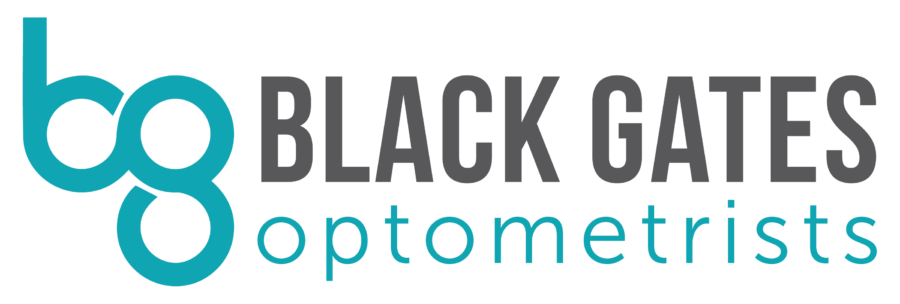Keratoconus
Typically, the inferior cornea gradually bulges forward into a cone shape. It is quite rare (the prevalence is about 1 in 2000) but New Zealand has a high incidence of keratoconus by world standards.
In mild keratoconus it is possible to wear normal glasses to correct the astigmatism that results from the unusually shaped cornea but moderate and severe keratoconus require special consideration.
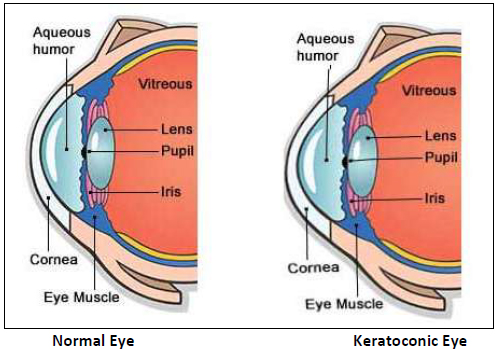
What Causes Keratoconus?
Keratoconus has both acquired and inherited components but the exact cause is not known. It is commonly associated with conditions like hayfever, allergies, asthma and eczema and we think there is a strong link to eye rubbing in many sufferers. It usually presents between the ages of 10 and 25 years, and it is uncommon for this disease to progress after age 40.
Keratoconus is also more common in people with Down’s syndrome but can affect anyone.
Development of Keratoconus
In its earliest stages, keratoconus causes slight blurring and distortion of vision as well as an increased sensitivity to glare and light. Vision blurs gradually and it is common for people not to notice the early stages. Often, they notice more difficulty seeing the front of the classroom and people notice them squinting their eyes to see clearly. Keratoconus may progress for 10-20 years and then slow in its progression. Each eye may be affected differently and one eye may have very poor vision while the other eye sees reasonably well.
As keratoconus progresses, the cornea changes its shape and becomes more distorted; this causes vision to become progressively more blurred. The cornea becomes thinner in some places which causes it to bulge outward causing the shape change.
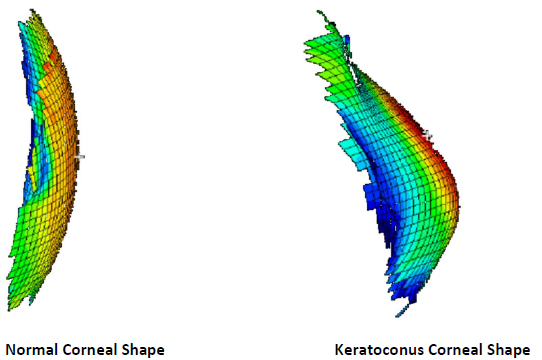
Heredity
There is a hereditary component in keratoconus. Studies have provided evidence to suggest a genetic basis for keratoconus. Up to 50% of family members of patients with keratoconus have subtle signs of early keratoconus. If you have keratoconus, your children should be screened regularly because we now have access to Collagen Crosslinking procedures that limit the extent of keratoconus and keep it in its mildest stages. Early diagnosis is important.
Treatment for Keratoconus
In early Keratoconus a procedure called Corneal Crosslinking can be useful. This procedure is designed to halt the progression of Keratoconus by making the cornea more rigid and less likely to distort. The therapy involves using vitamin B12 (riboflavin) drops and UV light to stiffen the middle layers of the cornea. It does not reverse any change that has already occurred but has been shown to minimise further change and is most useful in teenage patients.
In mild Keratoconus it is possible to wear normal glasses to correct the astigmatism that results from the unusually shaped cornea but moderate and severe Keratoconus require special consideration.
What Happens Next?
As the cornea gradually becomes more cone- shaped, the vision blurs and becomes distorted. Monocular diplopia [double vision in one eye] and ghosting are common.
In mild Keratoconus, good vision can be often be achieved with glasses or soft contact lenses, but in more advanced cases specially designed more rigid gas permeable lenses are required. In most cases the condition will stabilise, but in some cases progresses to a point where contact lenses are no longer appropriate and a corneal graft (transplant) is indicated. There are risks associated with this type of surgery but the success rate for corneal grafts is extremely high. It is important to realise that contact lenses may still need to be worn after surgery and there are special designs for post corneal transplant lens fitting. The evolution of contact lens designs and materials has meant that very few people are not able to wear contact lenses successfully.
Contact Lens Fitting for Keratoconus
Special contact lenses are specially designed for Keratoconus. The front curves are designed to provide normal undistorted vision and the back curves are tailored to fit the unusual eye shapes. Fitting contact lenses can be challenging as these lenses generally need to be custom made. A little patience will be needed during the prototyping phases while the lens design is finalised. The images below are of some successfully fitted contact lens designs for Keratoconus (the green represents the tear film underneath the contact lens.
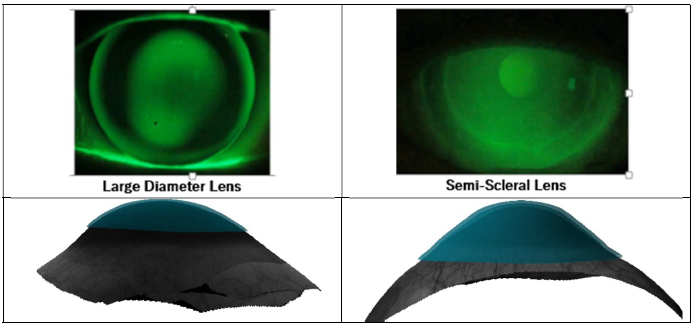
Today, there are many different lens types and strategies and at Black Gates Optometrists. We are constantly testing and exploring lenses from all over the world. New Zealand has some experts in this field and one of the most successful lens designs was developed right here in New Zealand by Dr Paul Rose.
Contact Lens Options for Keratoconus
- Special Soft Lenses
- Rigid Contact Lenses
- Small diameter corneal lenses
- Large diameter corneal lenses
- “Piggy Back” lenses – this is a rigid corneal lens fitted over a soft lens
- Mini Scleral lenses (fit over the cornea onto the white of the eye)
- Scleral lenses (fit over the cornea onto the white of the eye)
- Hybrid contact lenses (Rigid Centre and soft skirt)
Not all contact lens options suit everyone and when choosing a strategy your optometrist will need to consider several factors including:
- Vision quality
- Ease of use –insertion and removal
- Comfort on eye
- Safety and health
- Cost of care and maintenance
- Convenience
Aftercare
Contact lens wearers with keratoconus need more frequent follow up visits than other contact lens wearers, because their corneal shape can change quite quickly. Their lenses will need to be refitted regularly to maintain good vision and lens comfort. A poorly fitting lens can cause scarring on the eye surface as well as discomfort and poor vision.
Subsidised Contact Lenses for Keratoconus
In New Zealand the Ministry of Health provides a small subsidy for lenses and fitting fees for some keratoconus patients provided they meet certain criteria – ask us about this.
Need help?
If you have any concerns or questions about your vision, please don’t hesitate to contact us. Our optometrists are here to help you protect your vision.
It’s wasy to make an appointment online right now to come and see our friendly team of optometrists in either Lower Hutt or Johnsonville, Wellington.
